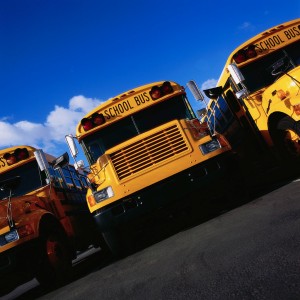By Danielle Roeber
 There’s a scene in the last season of the TV series, “The West Wing” when the outgoing President’s Chief of Staff is offered $10 billion to “attack” a single problem that would have a substantive impact. She names highways, explaining that 9 out of 10 African aid projects fail because the people and resources can’t get to the people in need. The philanthropist’s initial reaction – less than excited. Transportation, particularly transportation safety, simply isn’t a sexy issue; “no one will ever raise money for it.”
There’s a scene in the last season of the TV series, “The West Wing” when the outgoing President’s Chief of Staff is offered $10 billion to “attack” a single problem that would have a substantive impact. She names highways, explaining that 9 out of 10 African aid projects fail because the people and resources can’t get to the people in need. The philanthropist’s initial reaction – less than excited. Transportation, particularly transportation safety, simply isn’t a sexy issue; “no one will ever raise money for it.”
That’s unfortunate. Before there was an information super highway, there was the real highway. And planes, trains, ships – all of which we still use today to visit loved ones, connect with business partners, and get away from it all on vacations. When that transportation system breaks down in a plane accident, train collision, or highway crash, it can be disruptive to the economy and society. It can make people cautious. Anxiety about flying goes up immediately after a plane crash. Here in DC, people were a little more nervous getting on the Metro after the 2009 collision outside Fort Totten station. But it doesn’t take very long for most people to forget these events and return to their normal activities. Why? Because they accept that the U.S. transportation system is generally safe.
Victims and families don’t forget, though. And neither do transportation safety professionals. We understand that highway crashes are a leading cause of death, particularly for younger people. We know that many more people are killed or injured in private plane crashes than in the dramatic commercial airline crashes that catch the attention of the nightly news. We can tell you just how things can go horribly wrong in an instant, shattering lives and necessitating critical, sometimes costly, changes. And unlike most of the population, we know what it takes to make the transportation system safe:
- Placing safety at the top of the transportation operations priority list;
- Dedicating time, energy, and resources to education, regulation, and enforcement;
- Investing in innovation and technology that can aid, and sometimes correct for, human behavior;
- Giving transportation safety the public, political, and policy attention that it deserves.
When I finished school more than 16 years ago, I sought a Federal government position. I wanted to serve my country, make a difference. For the last 13 years, I’ve done that by working at the National Transportation Safety Board. No, I didn’t seek a transportation safety career when I graduated; as The West Wing points out, transportation didn’t sound like an exciting career. I guess transportation safety chose me. It’s been a quiet, behind-the-scenes kind of service. And neither I nor my colleagues and other transportation safety professionals will ever know who didn’t crash, get injured, or die because of the work we’ve done. In some ways, this is one of the noblest professions. We work hard to “attack” the single problem of transportation safety, where we’re needed, whether or not anyone knows about it. We do so because we know that each life saved is worth it.
Today is my last day with the NTSB but transportation safety remains a part of me, and I will continue to work in this field. My vantage point may change, but not my admiration for the NTSB nor my commitment to transportation safety.
Danielle Roeber served as the Chief of NTSB’s Safety Advocacy Division.




